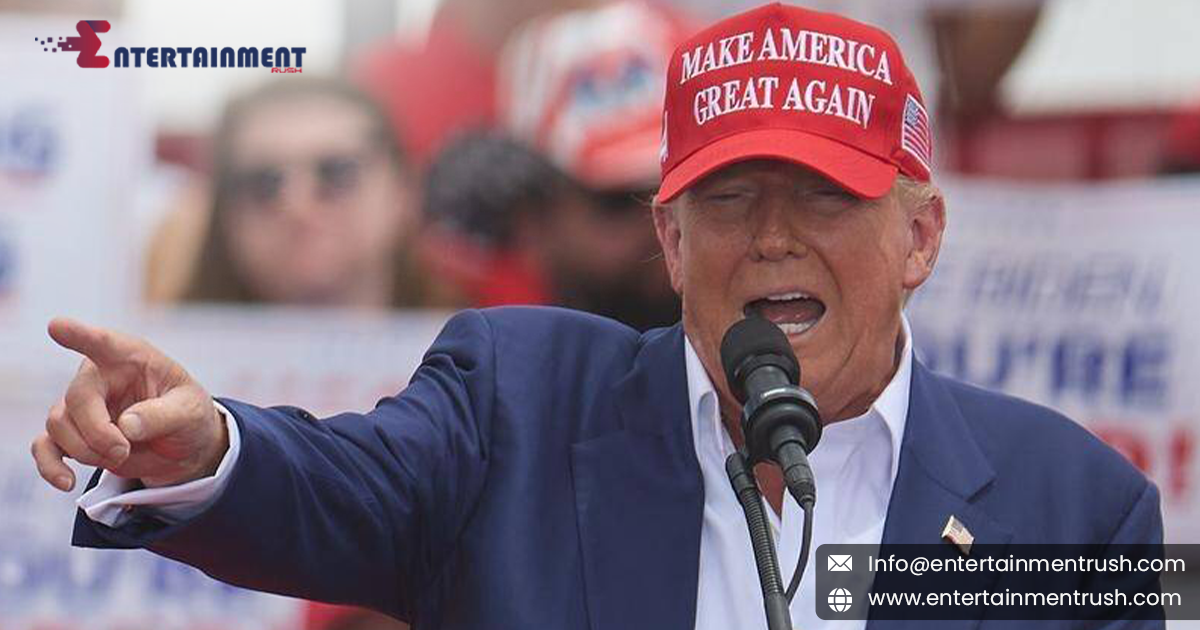Former President Donald Trump has made headlines once again by unveiling a series of new tax cut proposals designed to energize his political base and influence the ongoing economic debate. This latest plan promises significant tax reductions for individuals and businesses, aiming to bolster economic growth and job creation. In this blog, we’ll explore the key elements of Trump’s new tax cut proposals, their potential impact on the economy, and the political motivations behind them.
Key Elements of the New Tax Cut Proposals
Trump’s new tax cut proposals reflect his continued commitment to economic policies that he believes will benefit the American people. The plan includes several notable features:
Individual Income Tax Cuts:
The proposal outlines substantial reductions in individual income tax rates. The plan aims to lower the tax burden on middle-class and high-income earners alike, to increase disposable income and stimulate consumer spending.
Corporate Tax Reductions:
One of the central pillars of Trump’s proposal is a significant cut in the corporate tax rate. By reducing the tax rate for businesses, Trump aims to encourage investment, expand job opportunities, and enhance the competitiveness of American companies on the global stage.
Estate Tax Reform:
The new proposals also include provisions for reforming the estate tax. By increasing the exemption threshold and lowering the tax rate, the plan seeks to ease the tax burden on estates, which Trump argues will benefit families and small businesses.
Simplified Tax Code:
Trump’s plan emphasizes simplifying the tax code to make it more straightforward for individuals and businesses to navigate. This includes reducing the number of tax brackets and eliminating certain deductions and credits to streamline the filing process.
Economic Implications
The economic impact of Trump’s new tax cut proposals is a topic of considerable debate. Proponents argue that the plan could lead to:
Increased Economic Growth:
By lowering taxes for individuals and businesses, the plan aims to boost economic activity. Reduced tax rates can increase consumer spending and business investment, potentially leading to higher economic growth.
Job Creation:
Lower corporate taxes are expected to incentivize businesses to invest in expansion and hire more employees. This could result in job creation and a decrease in unemployment rates.
Enhanced Competitiveness:
By reducing the corporate tax rate, Trump’s plan seeks to make American businesses more competitive globally. Lower taxes can attract foreign investment and encourage domestic companies to keep their operations within the U.S.
However, critics of the plan raise concerns about:
Increased Budget Deficits:
Significant tax cuts could lead to higher budget deficits if not offset by equivalent spending cuts or revenue increases. Critics argue that the plan could exacerbate the national debt and create fiscal challenges in the long term.
Income Inequality:
Some critics contend that the tax cuts may disproportionately benefit higher-income individuals and large corporations, potentially widening the gap between wealthy and lower-income Americans.
Political Appeal and Strategic Motivations
Trump’s new tax cut proposals are strategically designed to resonate with his political base and bolster his standing in upcoming elections. The plan reflects key themes from his previous administration, including:
Economic Nationalism:
Trump’s focus on reducing corporate taxes and simplifying the tax code aligns with his broader economic nationalist agenda. By advocating for policies that prioritize American businesses and workers, Trump aims to appeal to voters concerned about global economic competition.
Fiscal Conservatism:
Despite concerns about budget deficits, Trump’s proposals reflect a commitment to fiscal conservatism by advocating for lower taxes as a means to stimulate economic growth. This approach is intended to resonate with voters who support reduced government intervention and lower tax burdens.
Campaign Strategy:
As Trump gears up for potential future political endeavors, including a possible presidential run, his new tax cut proposals serve as a platform to consolidate support among his base. The plan highlights his continued influence on economic policy and reinforces his image as a champion of tax reform.
The Road Ahead
As Trump’s new tax cut proposals make their way through the political landscape, the focus will shift to how they are received by lawmakers, economists, and the public. The proposals will likely face scrutiny and debate as stakeholders assess their potential impact on the economy and government finances.
For now, Trump’s unveiling of these proposals underscores his ongoing influence in shaping economic policy and political discourse. Whether or not the plan is enacted, it will undoubtedly play a role in the broader conversation about tax policy and economic strategy in the years to come.
Trump’s new tax cut proposals represent a bold attempt to shape the economic and political landscape as he seeks to reconnect with his base and influence future policy debates. With significant reductions in individual and corporate taxes, the plan aims to stimulate economic growth and job creation while simplifying the tax code. As the proposals move through the political process, their impact on the economy and their reception by the public will be closely watched. Whether or not the plan achieves its objectives, it highlights the ongoing importance of tax policy in shaping America’s economic future.




Leave feedback about this